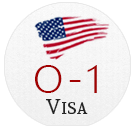Chart 1: Application Final Action Dates For Employment-Based Preference Cases
If a category in the Visa Bulletin indicates that the category is Current (C), there is no backlog for that category for that month. If a category is Unavailable (U), then no applications for permanent residence will be accepted in that category during the month. If the foreign national’s country of chargeability (country of birth) is other than India, China, Mexico or Philippines, use the “World-wide” dates to determine whether a priority date is current.
In order to be granted an immigrant visa or adjustment of status, your priority date must be before the date listed for your category and country in this chart.
| Employment-Based | All Chargeability Areas Except Those Listed |
CHINA- mainland born |
India | Mexico | Philippines |
|---|---|---|---|---|---|
| 1st | C | 08 NOV 22 | 15 FEB 22 | C | C |
| 2nd | 15 OCT 23 | 01 DEC 20 | 01 JAN 13 | 15 OCT 23 | 15 OCT 23 |
| 3rd | 08 FEB 23 | 22 NOV 20 | 15 APR 13 | 08 FEB 23 | 08 FEB 23 |
| Other Workers | 22 JUN 21 | 01 APR 17 | 15 APR 13 | 22 JUN 21 | 22 JUN 21 |
| 4th | U | U | U | U | U |
| Certain Religious Workers | U | U | U | U | U |
| 5th Non- Regional Center (C5 and T5) | C | 22 JAN 14 | 01 MAY 19 | C | C |
| 5th Regional Center (I5 and R5) | C | 22 JAN 14 | 01 MAY 19 | C | C |
“C” means current and “U” means unavailable.
Chart 2: Dates For Filing of Employment-Based Visa Applications
If a category in the below chart indicates that the category is Current (C), all applicants in that category may file their immigrant visa applications regardless of priority date. If the foreign national’s country of chargeability (country of birth) is other than India, China, Mexico or Philippines, use the “World-wide” dates to determine the cut-off date.
In order to file an application for immigrant visa or adjustment of status, your priority date must be before the date listed for your category and country in this chart.
| Employment-Based | All Chargeability Areas Except Those Listed | China-mainland born | India | Mexico | Philippines |
|---|---|---|---|---|---|
| 1st | C | 01 JAN 23 | 15 APR 22 | C | C |
| 2nd | 15 NOV 23 | 01 JAN 21 | 01 FEB 13 | 15 NOV 23 | 15 NOV 23 |
| 3rd | 01 MAR 23 | 22 DEC 20 | 08 JUN 13 | 01 MAR 23 | 01 MAR 23 |
| Other Workers | 22 JUL 21 | 01 JAN 18 | 08 JUN 13 | 22 JUL 21 | 22 JUL 21 |
| 4th | 01 FEB 21 | 01 FEB 21 | 01 FEB 21 | 01 FEB 21 | 01 FEB 21 |
| Certain Religious Workers | 01 FEB 21 | 01 FEB 21 | 01 FEB 21 | 01 FEB 21 | 01 FEB 21 |
| 5th Non- Regional Center (C5 and T5) | C | 01 OCT 16 | 01 APR 22 | C | C |
| 5th Regional Center (I5 and R5) | C | 01 OCT 16 | 01 APR 22 | C | C |
Are You Experiencing Immigration Issues?
Get answers to your immigration questions to work, invest, marry or live in the U.S.
Start My Phone ConsultationThe Department of State (DOS) issues the Visa Bulletin monthly on the availability of immigrant visas. Because U.S. regulations have capped the number of foreign nationals that can immigrate to the U.S. each year, an immigrant visa number is required for each person immigrating permanently to the United States. This applies whether the foreign national is seeking an Immigrant Visa at a U.S. Consulate outside the U.S., or through Adjustment of Status with USCIS inside the U.S.
Immigrant visas are numerically limited by both the category and by the country of chargeability (usually the country of birth of the immigrant). Individuals who are the beneficiaries of employment based immigrant visa petitions (I-140, I-360, I-526) fall into “preference” categories and must wait in line for their particular category and country of chargeability to become “current”.
First Preference:
Priority Workers: 28.6% of the worldwide employment-based preference level, plus any numbers not required for fourth and fifth preferences.
Second Preference:
Members of the Professions Holding Advanced Degrees or Persons of Exceptional Ability: 28.6% of the worldwide employment-based preference level, plus any numbers not required by first preference.
Third Preference:
Skilled Workers, Professionals, and Other Workers: 28.6% of the worldwide level, plus any numbers not required by first and second preferences, not more than 10,000 of which to “Other Workers”.
Third Preference Other Workers Category:
Section 203(e) of the NACARA, as amended by Section 1(e) of Pub. L. 105-139, provides that once the Employment Third Preference Other Worker (EW) cut-off date has reached the priority date of the latest EW petition approved prior to November 19, 1997, the 10,000 EW numbers available for a fiscal year are to be reduced by up to 5,000 annually beginning in the following fiscal year. This reduction is to be made for as long as necessary to offset adjustments under the NACARA program. Since the EW cut-off date reached November 19, 1997 during Fiscal Year 2001, the reduction in the EW annual limit to 5,000 began in Fiscal Year 2002.
Fourth Preference:
Certain Special Immigrants: 7.1% of the worldwide level.
Fifth Preference:
Employment Creation: 7.1% of the worldwide level, not less than 3,000 of which reserved for investors in a targeted rural or high-unemployment area, and 3,000 set aside for investors in regional centers by Sec. 610 of P.L. 102-395.
INA Section 203(e) provides that employment-based preference visas be issued to eligible immigrants in the order in which a petition in behalf of each has been filed. Section 203(d) provides that spouses and children of preference immigrants are entitled to the same status, and the same order of consideration, if accompanying or following to join the principal. The visa prorating provisions of Section 202(e) apply to allocations for a foreign state or dependent area when visa demand exceeds the per-country limit. These provisions apply at present to the following oversubscribed chargeability areas: CHINA-mainland born, INDIA, MEXICO, and PHILIPPINES.
What VisaPro Customers Are Saying
I am pleased to write a review of my experience with VisaPro, who helped me get my green card. I discovered VisaPro with a web search and arranged an interview with [the Attorney], who quickly ascertained upon reviewing my CV that I wasting my time exploring an O-1 visa but rather I should be looking at the EB-1 category: Alien of Extraordinary Ability. Overall this is a great team who really know what they are doing. One cannot go wrong in using them for your visa needs.

Chart 1: Application Final Action Dates For Employment-Based Preference Cases
If a category in the Visa Bulletin indicates that the category is Current (C), there is no backlog for that category for that month. If a category is Unavailable (U), then no applications for permanent residence will be accepted in that category during the month. If the foreign national’s country of chargeability (country of birth) is other than India, China, Mexico or Philippines, use the “World-wide” dates to determine whether a priority date is current.
In order to be granted an immigrant visa or adjustment of status, your priority date must be before the date listed for your category and country in this chart.
| Employment-Based | All Chargeability Areas Except Those Listed |
CHINA- mainland born |
India | Mexico | Philippines |
|---|---|---|---|---|---|
| 1st | C | 15 NOV 22 | 15 FEB 22 | C | C |
| 2nd | 15 OCT 23 | 15 DEC 20 | 01 JAN 13 | 15 OCT 23 | 15 OCT 23 |
| 3rd | 01 APR 23 | 01 DEC 20 | 22 APR 13 | 01 APR 23 | 08 FEB 23 |
| Other Workers | 08 JUL 21 | 01 MAY 17 | 22 APR 13 | 08 JUL 21 | 08 JUL 21 |
| 4th | U | U | U | U | U |
| Certain Religious Workers | U | U | U | U | U |
| 5th Non- Regional Center (C5 and T5) | C | 22 JAN 14 | 01 MAY 19 | C | C |
| 5th Regional Center (I5 and R5) | C | 22 JAN 14 | 01 MAY 19 | C | C |
“C” means current and “U” means unavailable.
Chart 2: Dates For Filing of Employment-Based Visa Applications
If a category in the below chart indicates that the category is Current (C), all applicants in that category may file their immigrant visa applications regardless of priority date. If the foreign national’s country of chargeability (country of birth) is other than India, China, Mexico or Philippines, use the “World-wide” dates to determine the cut-off date.
In order to file an application for immigrant visa or adjustment of status, your priority date must be before the date listed for your category and country in this chart.
| Employment-Based | All Chargeability Areas Except Those Listed | China-mainland born | India | Mexico | Philippines |
|---|---|---|---|---|---|
| 1st | C | 01 JAN 23 | 15 APR 22 | C | C |
| 2nd | 15 NOV 23 | 01 JAN 21 | 01 FEB 13 | 15 NOV 23 | 15 NOV 23 |
| 3rd | 01 MAY 23 | 22 DEC 20 | 08 JUN 13 | 01 MAY 23 | 01 MAY 23 |
| Other Workers | 22 JUL 21 | 01 JAN 18 | 08 JUN 13 | 22 JUL 21 | 22 JUL 21 |
| 4th | 01 FEB 21 | 01 FEB 21 | 01 FEB 21 | 01 FEB 21 | 01 FEB 21 |
| Certain Religious Workers | 01 FEB 21 | 01 FEB 21 | 01 FEB 21 | 01 FEB 21 | 01 FEB 21 |
| 5th Non- Regional Center (C5 and T5) | C | 01 OCT 16 | 01 APR 22 | C | C |
| 5th Regional Center (I5 and R5) | C | 01 OCT 16 | 01 APR 22 | C | C |
Are You Experiencing Immigration Issues?
Get answers to your immigration questions to work, invest, marry or live in the U.S.
Start My Phone ConsultationThe Department of State (DOS) issues the Visa Bulletin monthly on the availability of immigrant visas. Because U.S. regulations have capped the number of foreign nationals that can immigrate to the U.S. each year, an immigrant visa number is required for each person immigrating permanently to the United States. This applies whether the foreign national is seeking an Immigrant Visa at a U.S. Consulate outside the U.S., or through Adjustment of Status with USCIS inside the U.S.
Immigrant visas are numerically limited by both the category and by the country of chargeability (usually the country of birth of the immigrant). Individuals who are the beneficiaries of employment based immigrant visa petitions (I-140, I-360, I-526) fall into “preference” categories and must wait in line for their particular category and country of chargeability to become “current”.
First Preference:
Priority Workers: 28.6% of the worldwide employment-based preference level, plus any numbers not required for fourth and fifth preferences.
Second Preference:
Members of the Professions Holding Advanced Degrees or Persons of Exceptional Ability: 28.6% of the worldwide employment-based preference level, plus any numbers not required by first preference.
Third Preference:
Skilled Workers, Professionals, and Other Workers: 28.6% of the worldwide level, plus any numbers not required by first and second preferences, not more than 10,000 of which to “Other Workers”.
Third Preference Other Workers Category:
Section 203(e) of the NACARA, as amended by Section 1(e) of Pub. L. 105-139, provides that once the Employment Third Preference Other Worker (EW) cut-off date has reached the priority date of the latest EW petition approved prior to November 19, 1997, the 10,000 EW numbers available for a fiscal year are to be reduced by up to 5,000 annually beginning in the following fiscal year. This reduction is to be made for as long as necessary to offset adjustments under the NACARA program. Since the EW cut-off date reached November 19, 1997 during Fiscal Year 2001, the reduction in the EW annual limit to 5,000 began in Fiscal Year 2002.
Fourth Preference:
Certain Special Immigrants: 7.1% of the worldwide level.
Fifth Preference:
Employment Creation: 7.1% of the worldwide level, not less than 3,000 of which reserved for investors in a targeted rural or high-unemployment area, and 3,000 set aside for investors in regional centers by Sec. 610 of P.L. 102-395.
INA Section 203(e) provides that employment-based preference visas be issued to eligible immigrants in the order in which a petition in behalf of each has been filed. Section 203(d) provides that spouses and children of preference immigrants are entitled to the same status, and the same order of consideration, if accompanying or following to join the principal. The visa prorating provisions of Section 202(e) apply to allocations for a foreign state or dependent area when visa demand exceeds the per-country limit. These provisions apply at present to the following oversubscribed chargeability areas: CHINA-mainland born, INDIA, MEXICO, and PHILIPPINES.
What VisaPro Customers Are Saying
The O-1 is a tough nut to crack and there is no denying it took hard work all round to get but, thanks to the patience, diligence and guidance given at every step by the team at VisaPro , I am now legal and able to join my colleagues in the United States."

 William Pura, Canada
William Pura, Canada Mark Westcott, United Kingdom
Mark Westcott, United Kingdom